Secret and mysterious objects and events from history, some of which have yet to be discovered

George Orwell wrote in his famous novel “1984”: “If you want to keep a secret, keep it from yourself.”
Our history is full of failed attempts to keep a group, story, or purpose secret, from the attempt to cover up the (Watergate) scandal, to the Gunpowder Plot in England... But what about the successful cover-up attempts? Some of the secret matters that we will review in this article are still shrouded in mystery, some of them have become exposed, and dangerous things have resulted from those secrets, and some of them have brought suffering to their owners.
So follow with us these secret things from history, which may arouse your interest and curiosity as well:
1. The identity of the man in the iron mask, who was imprisoned for 34 years in France

Painting titled "The Man in the Iron Mask" by an unknown painter.
Image: Wikimedia Commons
The man in the iron mask was a prisoner of King (Louis XIV) in France, and was arrested either in 1669 or 1670, and remained there until his death in 1703. The man was imprisoned in several locations (in the Bastille prison as well), and the identity of the prisoner remains secret until today.
The man was imprisoned for 34 years by (Benin Dufferne de Saint-Mars), and the latter took extreme measures to preserve the identity of his prisoner. No one was allowed to see the prisoner's face, which was always covered with cloth and a mask. Two soldiers stood outside the prisoner's cell, always preparing to shoot him if he removed his mask. The man's cell was also specially designed, as it contained several doors, one of which was opened and the other closed, thus no one could hear the conversations that took place inside the cell.
In the end, after the death of the prisoner on November 19, 1703, all the man's possessions, including clothes, furniture, and things, were destroyed, the walls of the cell were repainted, and everything made of metal was melted down in it, even the prisoner's mask.
Several theories emerged about the identity of the imprisoned man. The philosopher (Voltaire), for example, said that the prisoner is the illegitimate brother of King (Louis XIV), while the French writer (Marcel Banol) claimed - and other subsequent theories - that the prisoner is the twin of King (Louis XIV). , and that he was born after his brother was born, and therefore his existence was hidden from the public so as not to claim the throne. American politician (Hugh Williamson) claimed that the prisoner was the father of (Louis XIV). Many claimed different theories, for example, it was said that the prisoner was a general who was dismissed from service, or a servant of a gentleman who was executed by the authorities, while others claimed that the prisoner was the son of (Charles II) King of England.
2. The Man Who Didn't Exist, Allied spy during World War II who fed enemies faulty intelligence to cover up the invasion of Sicily

Major Martin's ID card.Image: Wikimedia Commons
During World War II, intelligence and counterintelligence were one of the weapons used by the Allied and Axis powers against each other, but their impact was of little value. The Allies carried out a secret operation to deceive the Axis powers, it was called "Operation Mace Mitt", part of a larger strategic operation to provide misinformation to the Nazis called "Operation Barclay".
Operation Mais Mitte was intended to disguise the Allied invasion of Sicily in 1943, or Operation Husky, and direct enemy forces to a completely different location. In order to complete this operation successfully, British intelligence obtained the body of a man named (Glendor Michael), a homeless man who died from eating rat poison in an abandoned warehouse in London. The British dressed the man's body in the uniform of a naval officer, earned him the rank of major, and his name became Major (William Martin). The man was also given correspondence coming from the British military leadership, in which it was indicated that the movements of the Allied soldiers near Sicily were a hoax, and that the real target was Greece.
The body and the false information attached to it were transported to the southern coast of Spain via a submarine. There, a fisherman found Glendor's body the next morning and told the authorities. Since the Spanish government under the leadership of the dictator (Franco) was neutral in the war, the Spaniards informed the German Military Intelligence Service, or the “Abwehr”, of the information they had obtained. And that was exactly what the Allies wanted.
British intelligence confirmed that the Nazis had taken the bait, as the British were able to decipher coded messages during World War I. Thanks to this operation, and the sacrifice of Glendower's body, the Allies were able to liberate Sicily easily, even more easily than they expected, and their losses were also less.
3. Greek fire, which was an effective firearm used by the Byzantine navy, but the method of its preparation remains unknown.

In this drawing, we see a Byzantine ship using Greek fire against the rebel ship (Thomas).Image: Wikimedia Commons
Greek fire is an incendiary weapon of unknown composition, used by the Byzantine Empire in the early year 672. Fire is often used in naval confrontations, and continues to burn even on the surface of the water instead of being extinguished. How does a flamethrower work today?
The discovery of Greek fire was so important to the Byzantine Empire that it would soon perish without this weapon. Between the years 674 and 678 AD, and again between the years 717 and 718, the Byzantine Empire was besieged by Arab Islamic forces that wanted to conquer Constantinople, so the Byzantines used Greek fire and succeeded in preserving the city.
Greek fire was also used by the Byzantine imperial fleet during the civil wars, defeating the hostile naval forces led by (Thomas the Slavic) in 821 in a revolt against Emperor (Michael II). However, this weapon had disadvantages that restricted its use, as the correct use of it depended on the direction of the wind in order to direct the flamethrower.
Unfortunately, the exact chemical composition of that Greek fire remained unknown, and the reason is that the Byzantine state worked hard to preserve the formula and composition of that weapon and protect it away from people's eyes, just as the Emperor (Constantine VII) asked his son (Romanos II) never to reveal the secret of manufacturing This weapon, where - as stated in the legend - an angel descended on the first Christian Byzantine emperor, Emperor (Constantine), and granted him that secret recipe for use by “Christians only, and exclusively within the imperial city.” Even when the Arabs seized a ship equipped with this weapon in 827, they could not understand the engineering of its manufacture. They could only shoot the fire with the catapult instead of using the hose.
Get to know “Greek Fire,” one of the most closely kept military secrets in history
4. Silphium is an unknown and extinct plant, but the ancients used it extensively in medicine to treat a large number of diseases

Ferula tingitana, which is similar to silphium.Image: Wikimedia Commons
According to the description, the plant has a thick root covered with black bark, and reaches a length of 48 cm. The stem of the plant is hollow. Wild silphium was heavily used by ancient societies as a prescription and folk medicine. The use of the plant has been recorded many times, and as far as we know from history, it seems that the ancients used the silphium plant to treat fever, indigestion, warts, and cough. So that (Hippocrates), or the father of medicine as he is called, described the plant, saying: “When the guts protrude and move and do not stay in place, rub the best types of silphium in the form of small pieces and place them on the place of pain in the form of a bandage.” It is believed that silphium has a benefit when used as a method of contraception and abortion, and it has also been noted that a number of plants belonging to the same class are capable of causing abortions due to their estrogenic properties.
Today, however, it is not known what that plant was. There is a common belief that silphium belongs to the genus Calach, and silphium is now extinct, or at least difficult to locate precisely. But in any case, botanists say: “Since we cannot accurately identify the plant, we cannot be sure whether it is extinct or not.”
Also, the reason that led to the extinction of this plant is not known. According to many different theories, natural factors and conditions may have led to the disappearance of this ancient plant, conditions such as excessive harvesting that made the soil infertile, or natural changes in climate, rainfall and desertification, or for example the increase in domestic animal husbandry in the region.
5. The tomb of Genghis Khan, the founder of the Mongol Empire, has been kept secret and undiscovered for 800 years until today.

Onon River, which is where Genghis Khan was born and probably his burial site as well.Image: Wikimedia Commons
Genghis Khan was a legendary leader and first ruler of the Mongol Empire, and of course, he was directly responsible for the deaths of some 40 million people worldwide. But everyone has a certain end, and so (Genghis Khan) died on the eighteenth of August 1227. There is a mausoleum for (Genghis Khan) in China, within Inner Mongolia, but it is nothing but a memorial mausoleum for the Mongolian leader built in the last century. As for the real (Genghis) tomb, it is still a mystery that baffles scientists and researchers. He left no evidence or mark of his burial site, and some believe he was buried in Mongolia, his native country.
But according to Mongolian legends, his attendants who conducted the burial ceremony killed everyone present, whether human or animal, as the dead chief's guards hoped his burial place would remain a secret. And when the construction of the tomb was completed, the slaves who carried out the construction process were also killed, and even the soldiers who killed those slaves were themselves killed later.
And do not think that killing those who saw the tomb of the leader is the only measure taken by the Mongol guards to protect the tomb of their leader and to hide the burial place from the people. For example, it is said that (Genghis Khan) was buried in one of the rivers, just as Gilgamesh or (Alaric) was buried - the latter is a Gothic leader who plundered and burned the city of Rome, and it is said that everyone who buried him after his death was killed in order to preserve the safety of his grave. Others claim that the Mongols used horses to trample the burial site and make it invisible, and then trees were planted over the cemetery.
Regardless of the truth of what happened, 50 years after the death of (Genghis Khan), that is, during the period of the Italian explorer (Marco Polo), the Mongols were never aware of the location of the tomb of their ancient leader. There is no accurate information even in the Mongolian historical books.
6. The Manhattan Project was kept so secret by the US that most of the people who worked on the atomic bomb didn't realize what they were doing.
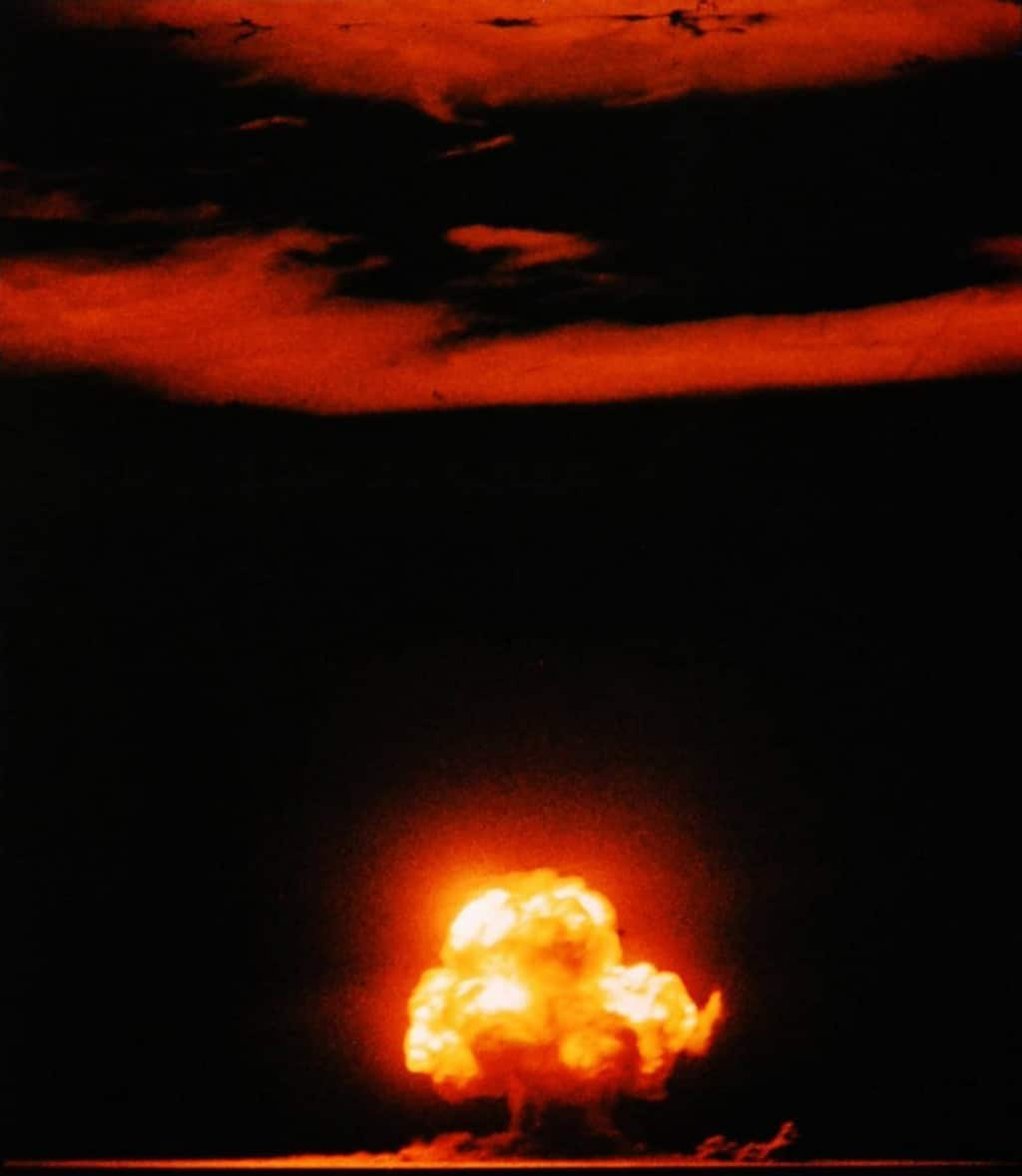
The first nuclear bomb test explosion.Image: Jack W Aeby
The Manhattan Project is a research and development program launched by the United States of America during the Second World War, which resulted in the manufacture of nuclear weapons that ended the war and changed the entire world's politics.
The duration of the project extended from 1942 to 1946, but it was officially canceled on the fifteenth of August 1947. The aim of the project was to design a nuclear bomb, with the assistance of the United Kingdom and Canada, and under the leadership of (Robert Oppenheimer) as head of the Los Alamos Laboratory. The first nuclear bomb was tested on July 16, 1945, and the project was also responsible for the manufacture of the two bombs that were dropped on the Japanese cities of Hiroshima and Nagasaki. In total, the cost of the Manhattan Project amounted to about two billion US dollars at that time, which is equivalent to 31 billion dollars today, and more than 130,000 people participated in this project during the years in which it was active.
Despite the exorbitant cost of the project and the huge workforce that worked on it, the Manhattan Project was a highly secret program in the United States, and only dozens of people in the entire United States knew its truth, and among those who worked on the project, amounting to 130 thousand people, as we explained earlier, did not Only a thousand people knew the purpose of the project, or that they were working on a nuclear bomb.
Keeping the matter a secret was an urgent necessity for the American authorities, because if the project was exposed, the Axis forces - specifically, Nazi Germany - would accelerate their own nuclear project, and perhaps manufacture a nuclear bomb before the United States, and change the entire history of the world. On the other hand, preserving the project's secrecy was necessary to protect it from sabotage, as enemy countries might send their agents and spies, which might harm the plan.
Life magazine reported in August 1945 that most employees “work in the dark, warily watching numbers and buttons while mysterious interactions take place behind those concrete walls.” Indeed, it seems that a large percentage of the employees did not know what this project was, and the reason may be that the government imposed a 10-year prison sentence on anyone who publishes information about this secret activity.
7. The two English princes who were imprisoned in the Tower, and most likely killed. But until today, no one knows who killed them and the reason behind that crime
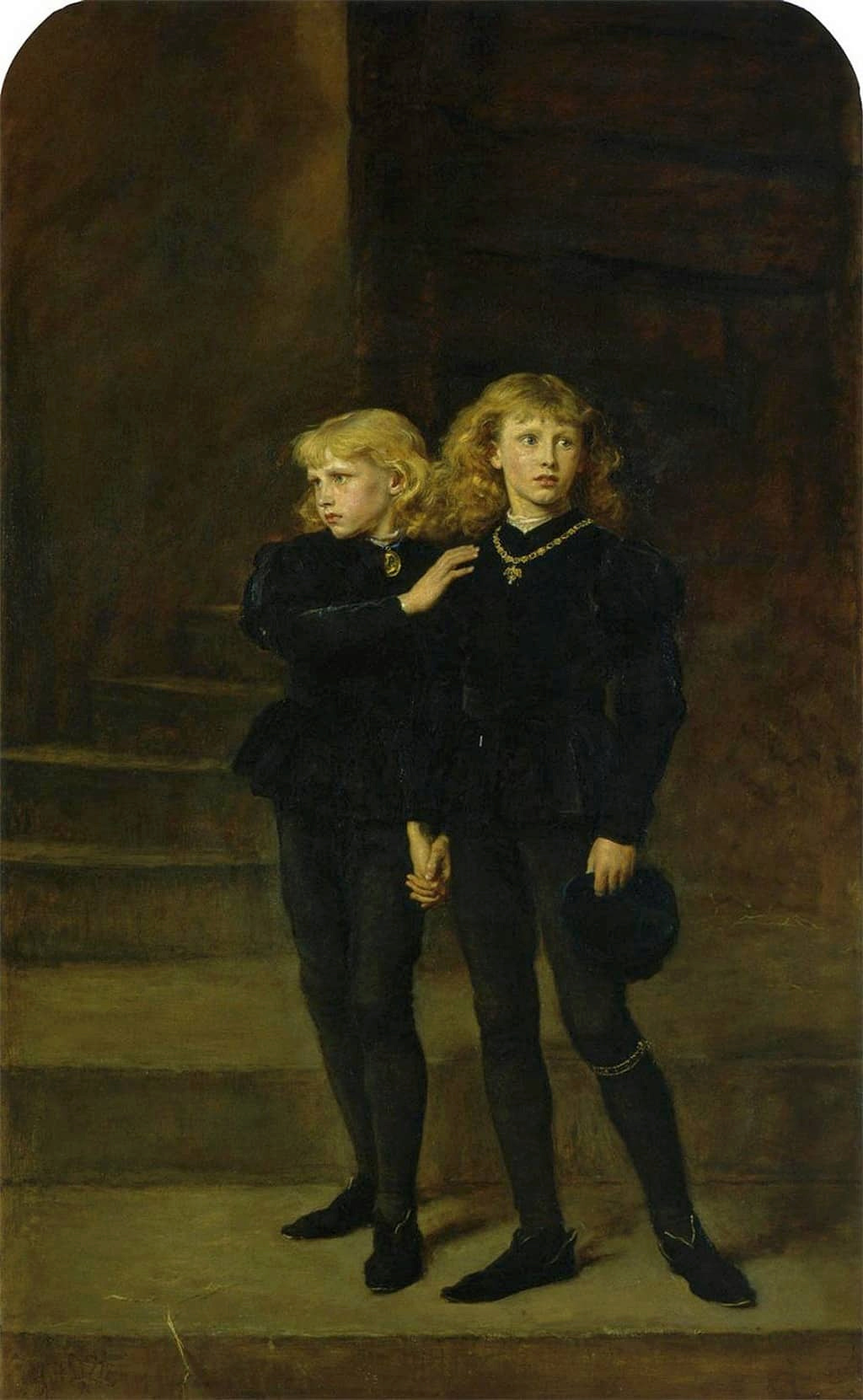
Princes Edward and Richard in the Tower, by Sir John Everett Melas.
Image: Wikimedia Commons
The two princes in the tower is an English historical term given to King (Edward V) and (Richard) Duke of York, who are the only two sons of King (Edward IV) after his death in 1483. According to the English royal tradition, the boys were placed in the tower until (Edward) was crowned king, Where he was 12 years old, while (Richard) was nine years old. Thus, their uncle (Richard), Duke of Gloucester, oversaw their protection and supervised their residence. But in their absence, their uncle (Richard) has usurped the throne, claiming that the two princes are the products of an illegitimate marriage and therefore have no claim to the throne. On the 25th of June, Richard was proclaimed King of England, and on the 6th of July he became known as Richard III. But in that period, that is, after the enthronement of (Richard) as king, the two princes disappeared and never appeared. Historians, and Britons in general, believe that the two princes were killed on the orders of their uncle, the new king of England.
But despite this, there are no independent, accurate and reliable sources to support this claim, apart from that they both disappear from English history without a trace. And if the two princes were really killed, it is also unknown who ordered their killing, as King (Richard III) was not the only beneficiary of their disappearance, and so, several theories arose in the subsequent centuries to explain their fate. The most famous theories related to the matter is the explanation of their killing at the hands of (Richard III) in order to protect his new throne, but there are other theories that claim that they were killed at the hands of (Henry Stafford), Duke of Buckingham, who wanted to take over the throne of England after the death of (Edward III). Perhaps the one responsible for the crime was (Henry VII), the victor in the English civil war against (Richard III), as (Henry) may have wanted to remove all his rivals for the throne.
8. Kulper's top-secret spy ring, which operated during the American Revolutionary War, and obtained crucial information during the war with the British

Colonel Benjamin Tallmadge, commander of Culper's Circle, with his son William.Image: Wikimedia Commons
It is a spy ring set up by George Washington in the summer of 1778, during the British occupation of New York City during the American Revolutionary War. Its aim was to penetrate the fortified city and obtain important intelligence on the activity and movements of the British army. Major (Benjamin Tolmadge) organized that ring, and the spies - most notably (Abraham Woodhull) and (Robert Townsend) - moved the information out of New York City and its surrounding areas, risking their lives and the lives of their families.
The Kolber Ring was a source of much valuable information, which is a major reason for defeating the British. For example, the Americans were able to learn of the British plan of a surprise attack on the newly arrived French forces in Newport, Rhode Island, under the command of General (Rochambeau).
The Americans also learned that the British planned to counterfeit American currency using printing paper. General William Tryon attempted to invade Connecticut in July 1779 as part of a deceptive plan to get George Washington to split his forces in half and send half of them to fight him. But the Americans knew about it thanks to the secret spy ring. It is also said that the secret Kolber ring exposed a plot to assassinate (George Washington), but this is not confirmed.
9. The Golden Buddha in Thailand, which was covered with plaster to protect it from theft when Ayutthaya fell. The statue disappeared for 200 years before reappearing

Golden Buddha statue at Wat Traimit, in Bangkok.Image: Wikimedia Commons
This golden Buddha statue is known as (Phra Phutha Maha Suana Patimakon), and it is a statue that weighs about 5 and a half tons, and is located in the Wat Traimit temple in Bangkok, Thailand. Its height is 3 meters and 90 cm, and its width exceeds 3 meters. With a little bit, it can be disassembled into 9 separate parts.
It is believed that this colossal statue was made sometime during the 13th and 14th centuries. It is clear that the architectural style of the statue belongs to the time of the rule of the Sukhothai dynasty, which lasted a century after the expected time of making the statue, while other historical evidence indicates that the statue was made in approximately the middle of the eighteenth century.
Regardless of the exact time of the creation of this statue, what we would like to inform you about is that 40 percent of the statue is made of pure gold, and gold covers 80 percent of the statue between the chin and forehead areas, and the statue's hair and head ornaments, which weigh 45 kilograms, are made of gold. Its purity is 99 percent. Therefore, the price of this statue in today's money exceeds the $200 million barrier!
It is believed that the statue was moved from Sukhothai to the Ayutthaya Kingdom around 1403, some time before the destruction of the Ayutthaya Kingdom by Burma in 1767. The statue was covered with a thick layer of plaster and pieces of colored glass. Thus, the statue became protected by this camouflage, and it remained standing among other monuments for about 50 years. In the year 1805, after the establishment of the city of Bangkok and making it the capital of the Kingdom of Thailand and the construction of a number of new temples, King (Rama I) requested old pictures of the Buddha statue in order to collect and distribute them. During the reign of (Rama II) - from 1824 to 1851 - the statue kept its secret, but it was transferred to the "Wat Chotanaram" temple in Bangkok, then transferred to the "Wat Traimit" temple in 1935, and placed there under a tin roof due to Not having enough space for it, as people did not know what the value of the statue was at the time.
Finally, in 1954, the statue was moved to a building specially designed to accommodate its large size, but during the transportation process, the statue fell and part of the plaster that was wrapping the statue was cut off, so gold appeared under the broken part. Today, the plaster has been completely removed from the golden statue, and 200 years after its disappearance, the Thai people are able to identify this very precious sculpture.
10. Lovers Cleopatra and Antony (Mark Antony), and their burial place unknown

Cleopatra.Image: Wikimedia Commons
(Cleopatra VII) was the wife of (Mark Antony), the latter was the ruler of the Ptolemaic Kingdom in Egypt. After the assassination of (Julius Caesar), (Antonius) allied with two other leaders to form the Second Triumvirate, and thus began the relationship (Cleopatra) and (Antonius). Three children resulted from this relationship: Alexander Helios, Cleopatra Selene II, and Ptolemy II Philadelphus. And led to the divorce (Antonius) of his wife, sister (Octavian).
Divorce was a great insult, in addition to the children being the future rulers of Egypt, which led to the outbreak of the last war in the Roman Republic, in which Octavian won a landslide victory. And when the naval fleet of Egypt was defeated in the Battle of Actium in 31 BC, the Romans invaded Egypt within a year, and it became clear to (Antonius) and (Cleopatra) that defeat was inevitable.
When Cleopatra learned of the suicide of her husband (Antonius), she was afraid of public humiliation or imprisonment, so she also ended her life. It is rumored that the method Cleopatra used to commit suicide was a poisonous snake bite.
(Augustus) allowed the deceased spouses to be buried together, according to the historians (Plutarchs) and (Suetonius), and also allowed their children to survive, in contrast to what happened with the child of (Cleopatra) and (Julius Caesar).
However, it is never known where (Antonius) and his mistress are buried, and the burial place remained a secret for almost two thousand years, and we do not even know if keeping the burial place a secret is intentional or not.
11. The original recipe for Kentucky Fried Chicken, which was developed by Harland Sanders, was kept secret and hidden in a safe in Louisville.

Kentucky Fried Chicken logo.Image: Wikipedia
The Kentucky Fried Chicken recipe was conceived in the 1930s and reached its best version by July of 1940, when Harland Sanders created the recipe based on the growing popularity of the fried chicken he was serving at a gas station in Corbin, Kentucky.
Sanders removed the fuel kit from the station, and turned it into a restaurant and a small hotel in the late 1930s. Of course, (Sanders) created a number of additions to that recipe, and changed several methods such as using a pan, which he replaced with deep browning because he found that frying according to that method was too slow, and (Sanders) saw that browning gives dry chicken, so he finally used pressure cooking and served The world has its famous meal, which consists of 11 herbs and spices.
The man marketed his fried chicken in the fifties of the last century under the name "Kentucky Fried Chicken", but (Sanders) feared that someone would imitate his magic recipe. So he instituted a strict policy to keep the original recipe secret and private.
One of the procedures he followed was to divide the recipe production process between several factories and suppliers. For example, half of the recipe is produced in Griffith Laboratories before it is sent to McCormick, and then the other half is added. In addition, the company refused to license that recipe, as this requires giving accurate details of the ingredients and limits the ownership of the expiration date, so Sanders resorted to complete secrecy in order to preserve his company. Today, there is a copy of the recipe, but it is preserved in a highly guarded safe at the headquarters of the "Kentucky Fried Chicken" company in Louisville, in addition to, of course, 11 vials containing the necessary herbs and spices.
12. The identity of Jack the Ripper, the serial killer who terrorized London and its suburb of Whitechapel
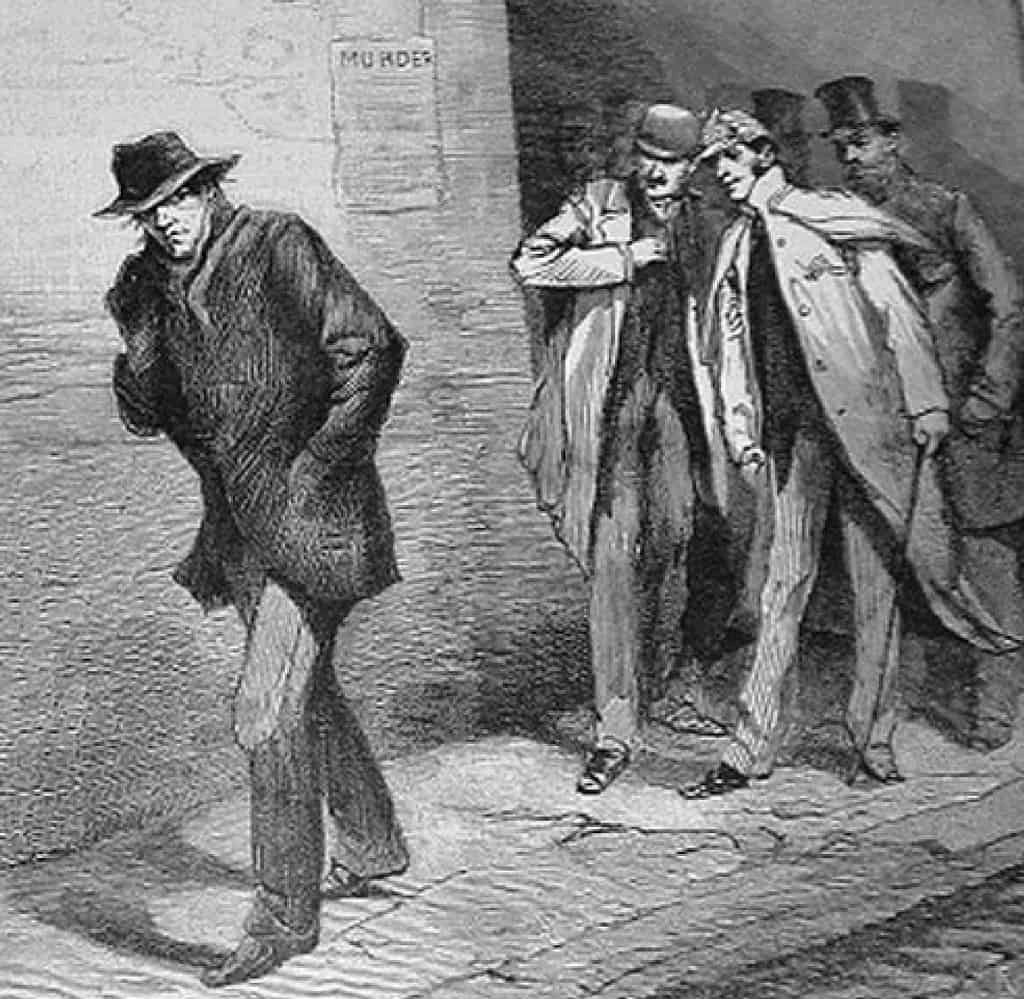
An image from The Illustrated London News shows a picture of a suspected Jack the Ripper.
Jack the Ripper is also known as the Whitechapel killer, and he is a serial killer responsible for killing at least 5 women in the Whitechapel area of London in 1888. The victims were all women who worked in the profession of prostitution, and they were found murdered with their throats cut, in addition to mutilation. Their genitals and their faces, and even the killer removed internal organs from the corpse after its death. According to the last and grisly detail, people believed the man was familiar with medical anatomy and may have had training in how to perform surgeries. It is believed that the killer stopped his crimes either because of his death, his arrest, or perhaps his emigration outside the country, but these are only speculations that do not have any reliability, and the identity of (Jack the Ripper) is still unknown to this day.
In the end, the authorities suspected 100 people who may have the signs or traits of the serial killer, among them the lawyer (Montague John Drott), the barbers (Swern Antonovit Kishovsky) and (Aaron Kominsky) - the latter was transferred to the "Conley Hatch" mental asylum in 1891 - and the manufacturer Boots (John Paiser).
But contemporary speculation has focused on an entirely different group of suspects, such as Thomas Hein Katbusch, a medical student admitted to a mental institution in 1891 after suffering hallucinations from syphilis. There is also (Frederick Bailey Deming), who immigrated to Australia in 1891 after killing his entire family, and before his execution by hanging, he wrote in his notebook during prison that he was (Jack the Ripper). But we don't think that is sufficient evidence.
13. US President Franklin Roosevelt's paralysis was top secret! So much so that European leaders didn't even know about the US president's illness

President Roosevelt with his daughter and his favorite dog.Photo: Universal History Archive/Getty Images
Franklin D. Roosevelt was the thirty-second president of the United States of America, but what many do not know is that the president was paralyzed in 1921, that is, when he was thirty-nine years old, and symptoms associated with paralysis appeared, such as malfunctioning of the bladder and intestines, numbness, And permanent paralysis in the area below the waist. The president was then diagnosed with polio, but today, those symptoms are considered to be associated with Guillain-Barre syndrome, which leads to an autoimmune neuropathy.
Although the president was unable to stand or walk without crutches, he refused to allow this disability to disrupt his personal life or his professional career. In the 1920s, he learned to walk short distances by relying on heavy metal slings that looked like a normal knee, and he also relied on a crutch to help him. in walking. As a result of this tragic personal struggle, (Roosevelt) became the first president of the United States with special needs, but no one even in the United States knew about his condition.
The president used the wheelchair when he was away from the public, and was very careful not to tarnish his image in front of the people. When he appears in front of the cameras, his assistants surround him on both sides so that he can stand. And in the event that he wants to give a public speech, the president rests on a table placed on the stage from which he gives the speech, and the president grips it tightly, so that he cannot move his hands, and for this reason, (Roosevelt) is famous for the famous gesture of the head that he used instead of moving the hands. As for getting out of the car, that is another issue: the president's escorts would park the car in an isolated garage (parking) to allow the president to get on and off easily.
14. The location of the lost island of Atlantis, which has not been found - if it is real - despite hundreds of investigations and explorations.
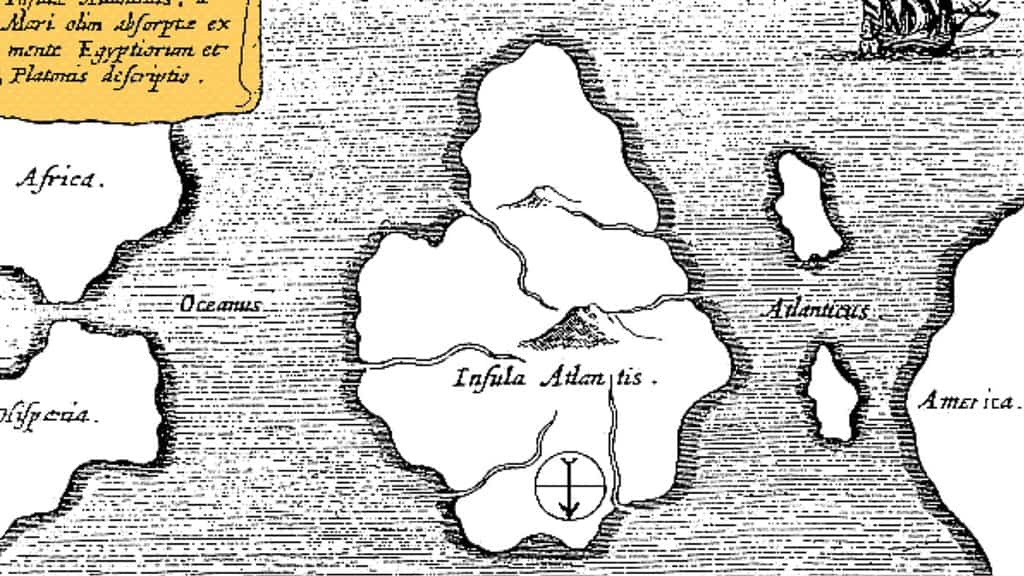
Map of Atlantis from 1669, note that it is located in the middle of the Atlantic Ocean.Image: Wikimedia Commons
Atlantis is a fictional island mentioned in the works of ancient Greek philosophers such as (Plato), where (Plato) used it as a metaphor to describe arrogant and arrogant nations, so in his works it was stated that its inhabitants angered the gods, so the entire city sank within the Atlantic Ocean. Certainly, the story mentioned by (Plato) is completely fictional, but his talk about a sunken island under the ocean inspired many people and pushed them to really believe in its existence, at least historically. In addition, it is known about (Plato) that many of his metaphors are taken from ancient stories, so it is possible that Atlantis really existed, or this is what people thought.
(Ignatius Donnelly) spoke in his book "Atlantis: The Ancient World" about that sunken civilization, and saw that many ancient civilizations were destroyed during the flood mentioned in the sacred religious books. Several later hypotheses resulted when the exploration campaigns began to find out the fate of that mysterious island. According to most of these hypotheses, Atlantis is located in the Mediterranean Sea, and the disappearance of the city is due to a volcanic eruption that occurred either in the seventeenth or sixteenth century BC. This volcanic eruption led to the creation of a huge tsunami that destroyed the Minoan civilization that arose on the island of Crete, and it is believed that Atlantis is one of the victims of these devastating natural phenomena.
?Does Atlantis really exist or is it just a historical legend
15. King Tutankhamun died at a very young age, so the cause of his death was a mysterious matter
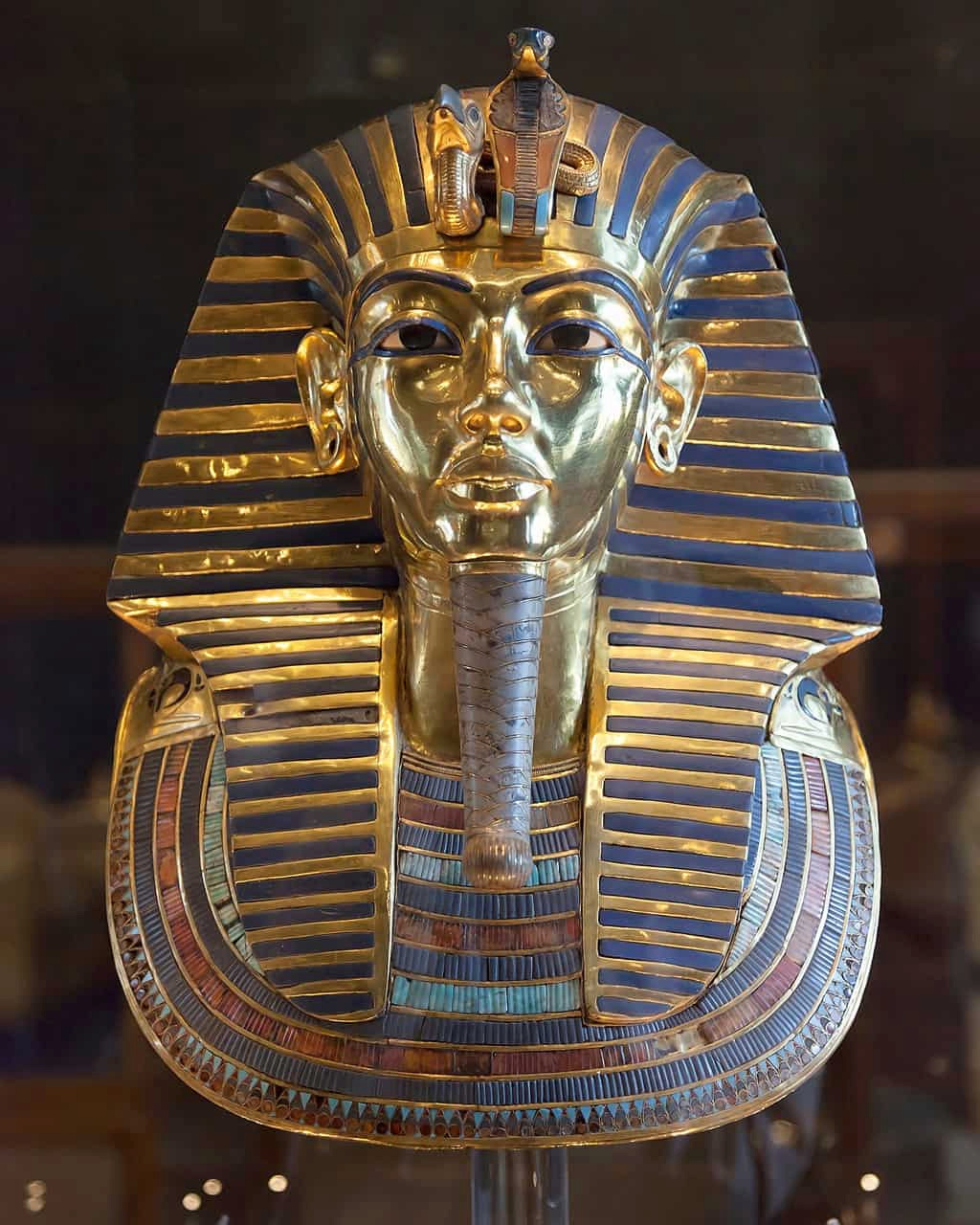
Statue of Pharaoh (Tutankhamun).Image: Wikimedia Commons
(Tutankhamun) was an Egyptian pharaoh who belonged to the 18th dynasty that ruled Egypt. Tutankhamun was born in 1341 BC and ruled the country during the New Kingdom era between 1332 and 1323 BC. In 1922, Howard Carter discovered the tomb of the pharaoh in a very intact condition, which drew the world's attention to the story of this young pharaoh. Despite conducting scientific and archaeological research for a century, not much is known about Tutankhamun's life, and there are no records of what happened when he died. But given the condition of the tomb, the microbiologist (Ralph Mitchell) explained that the paint on the walls indicates that the pharaoh was buried before the paint dried, which also indicates the possibility of his sudden death before his tomb was completed.
Some suggest that (Tutankhamun) died as a result of an assassination, but others indicate that his death was natural. During a recent medical examination of the mummy of the pharaoh, some important things were found: the man had suffered a broken leg before his death, which may have led to a fatal infection. Medical examinations also indicate the presence of malaria and Kohler's disease, as these epidemics may have played a role in the king's death.
In the end, we find that our history is full of undiscovered things, and there is always room for the human imagination to create strange stories of what it does not know or understand. On the other hand, we find that some secrets carried dangerous things with them, which may have led to a change in the entire world as we know it. What do you think of the most important of these secrets? What stories and incidents ?sparked your curiosity
Source : websites

